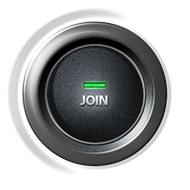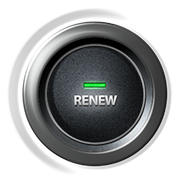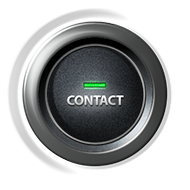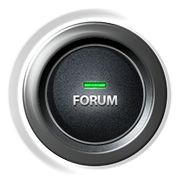Avenger Tiger
The Avenger Tiger story began with an exercise by Chrysler to publicise the Avenger. Externally, the Tiger is a sure attention grabber and for this reason Chrysler paraded an initial batch of about One hundred cars around their showrooms purely to draw attention to their standard range of Avengers. Initially the Avenger Super 4-door cars were modified by the Chrysler Competitions Centre under Des O' Dell and the Tiger model was launched in March 1972.
The modifications included the 1500 GT engine with improved cylinder head which included larger valves, inlet 1.54” and exhaust 1.34”. The ports and valve throats were enlarged and the head face skimmed to give a compression ratio of 9.4:1. Twin Weber 40 DCOE type 70 & 71 carburettors, special inlet/exhaust combined manifold and 1.3/4" free-flow exhaust system. The 1498cc Tiger engine know developed 107 gross (92.5 DIN) bhp at 6,100 rpm. On the suspension side the Tiger used Armstrong Heavy Duty Export struts up front with 100lb -1" front springs. At the rear, Armstrong adjustable (1-7) dampers and 240lb -1 1/2" springs completed the equation. 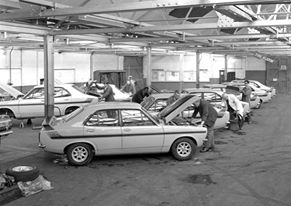
The gearbox and rear axle (3.8:1 final drive) are all Avenger GT with a specially balanced propshaft. The brakes are also Avenger GT with the addition of a remote Girling MK2B servo mounted on the N/S bulkhead.
A distinctive paint job involving a matt black bonnet bulge, rear panel and side stripes with "Avenger Tiger" lettering on the rear quarters was standard. Nearly all the first 100 cars were Sundance Yellow, although the first three Tigers were White with Blue stripe. Inside Restall reclining bucket seats with removable headrest were fitted, and a small 2" Smiths pod rev counter fitted to the top of the "Avenger Super" dashboard, which was otherwise standard. Four Lucas auxiliary lamps (two Lucas CLR 700 with Continental light units on top and a pair of Lucas FT 14’s below). 13”x5.67” Magnesium Minilite wheels, shod with Dunlop 185/70/13 SP Sport Formula 70 tyres, a boot spoiler, bonnet bulge, and racing-type mirrors mounted half way along the front wings completed the picture.
On the performance side the Tiger was no slouch. A 1972 road test of a Tiger (BRW 767K) with "stage two" cylinder head which had slightly larger valves than the standard Tiger recorded 0-60 time of 8.42sec. and a top speed of 110 mph, (standard Tiger CHP 565K road test figures are- 0-60 8.9sec., top speed of 108 mph). These figures comfortably beat the Ford Escort Mexico, but fuel consumption was heavy at around 19-25 mph. The price of these initial cars was estimated at £1,500. 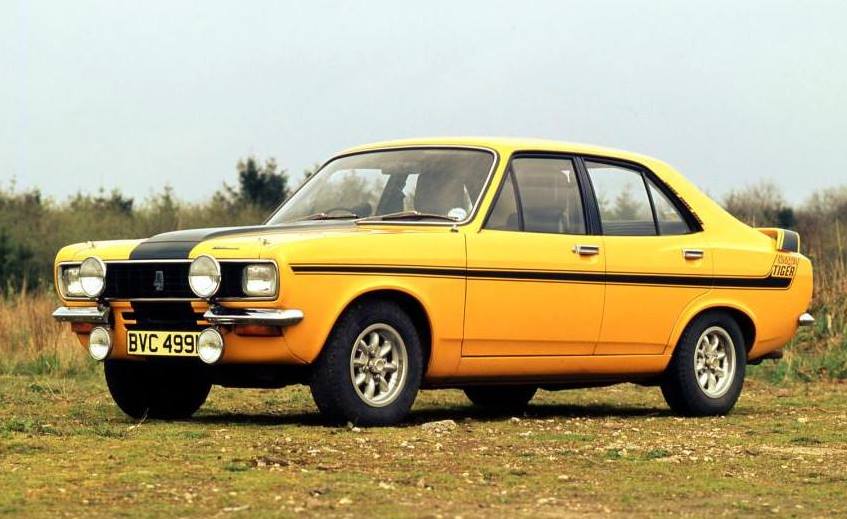 Demand for the Tiger was such that Chrysler started limited production. This had a benefit of enabling a number of Tiger parts to be homologated for racing and rallying purposes. The Avenger Tigers were assembled in the Service Dept. and production figures are vague, however, best estimates indicate around 200 of the early MK1 Tigers were built.
Demand for the Tiger was such that Chrysler started limited production. This had a benefit of enabling a number of Tiger parts to be homologated for racing and rallying purposes. The Avenger Tigers were assembled in the Service Dept. and production figures are vague, however, best estimates indicate around 200 of the early MK1 Tigers were built.
In October 1972 Chrysler unveiled the MK2 Tiger, this could be called "productionised" and some changes were made. The Avenger GL body shell with 4 headlights was used, together with the Avenger GT dashboard. Mechanically identical to the earlier cars, the bonnet bulge was deleted, Exacton alloy wheels replaced the more expensive magnesium Minilites and the excellent Restall seats became optional. The MK2 cars went on sale at a price of £1,350. Production total for these cars was around 400. Only two colours were available, Sundance Yellow and Wardance Red, both complimented by the same side striping as the MK1 car, but now had a full matt black bonnet.  By late 1973 production had ended, although as Chrysler had managed to get the ‘Tiger’ parts homologated for group 1 racing/rallying, it could be argued there was no further need to produce such a specialised car. The "Stage Two" road test car BRW 767K was subsequently used as a development vehicle for factory rally Avengers before being sold to a Chrysler employee and used in club rallying. Little is known to how many Avenger Tigers were used by Chrysler as development/press cars or rally cars for that matter. These are the ones we know of. BRW 767K, EVC 245L, CHP 565K, CHP 566K, CKV 839K, EVC 705L, EWK 640L.
By late 1973 production had ended, although as Chrysler had managed to get the ‘Tiger’ parts homologated for group 1 racing/rallying, it could be argued there was no further need to produce such a specialised car. The "Stage Two" road test car BRW 767K was subsequently used as a development vehicle for factory rally Avengers before being sold to a Chrysler employee and used in club rallying. Little is known to how many Avenger Tigers were used by Chrysler as development/press cars or rally cars for that matter. These are the ones we know of. BRW 767K, EVC 245L, CHP 565K, CHP 566K, CKV 839K, EVC 705L, EWK 640L.
Today there are probably around 50 original Tigers left, others having been left to rust away or have been raced/rallied to oblivion. This gives them a rarity value compared with the much more numerous Ford Escort Mexico of its class, and this together with the Tigers racing and rallying pedigree and Chrysler Competitions Centre’s history, makes the restoration of an Avenger Tiger worth while.




